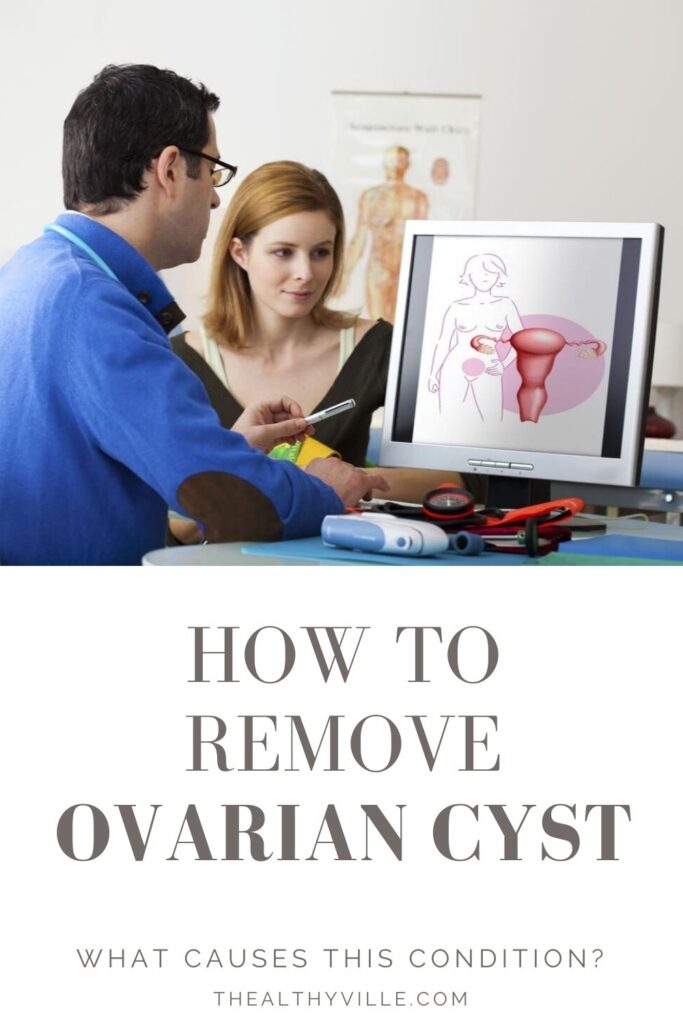How to remove ovarian cyst? Ovarian cysts may require treatment if they produce symptoms or are at risk for complications.
The treatment of ovarian cysts is part of the therapies for benign pathologies of the female reproductive system. This injury is a kind of fluid-filled sac inside the organ or on its surface.
Many of the women present them at some point in their lives. It is a very frequent situation that, only in postmenopause, has a prevalence of around 14%.
The truth is that these tumors can disappear on their own and proceed without any discomfort. However, in some cases they cause severe symptoms, so treatment for ovarian cysts is necessary. We explain everything you should know about it.
What types of ovarian cysts are there?
As we have just pointed out, cysts in the ovaries are benign tumors that appear in this organ. They contain liquid inside. Generally, they can be: functional and non-functional cysts.
Functional cysts are those that arise from an ovarian follicle. The follicles are in charge of releasing the egg in each cycle, as well as being hormone producers. When a follicle does not release the egg and continues to grow, it can end up forming a cyst.
Most of them are self-limiting and disappear on their own when three or four menstrual cycles pass. In addition, they do not usually cause pain or any other symptoms.
On the other hand, there are cysts on the ovaries that are not related to the menstrual cycle, which fall into the category of non-functional. They are cystadenomas, endometriomas, and dermoids, among others. These are associated with an increased risk of complications, and therefore require treatment.
What are the complications?
Possible ovarian cyst treatments focus on avoiding complications that can be life-threatening for women. For example, rupture of the lesion could occur with fluid passing into the abdominal cavity.
This causes internal bleeding and severe pain in the lower abdomen. The risk of rupture varies according to the size of the tumor, being higher in those with a large diameter.
Cysts also cause ovarian torsion. This complication usually manifests with nausea, vomiting, and pain. In addition, there’s compromise of the blood flow of the ovary, as if a strangulation occurs, leading to the death of the cells that compose it.
How to remove ovarian cyst?
Cysts on the ovaries, in many women, are accidentally detected during a gynecological examination. The vast majority do not produce symptoms, so a treatment option is only observation.
That is, when these tumors do not cause any damage, it is best to periodically monitor the cyst. In this way, it is analyzed if it changes in size or if new symptoms have appeared. Conversely, when there are risks of complications or symptoms, there are alternatives.
Medical treatment
Hormonal contraceptives are sometimes recommended to treat cysts on the ovaries or prevent them from coming back. What they do is inhibit ovulation, so no new ones are formed. However, they do not reduce the size of those that already exist.
In addition, hormonal contraceptives, such as pills, have numerous side effects. A study published in the Chilean Journal of Obstetrics and Gynecology concluded that there is no substantial difference between treatment with oral contraceptives and maintaining watchful waiting.
Surgical treatment
When ovarian cysts are large or grow fast, most doctors decide to remove them by surgery. It may even be a hidden carcinogenic process, so removing it is one of the best options.
Doctors perform the removal using two techniques: laparoscopy or laparotomy. Also, depending on the nature of the cyst, only a part or the entire ovary may need removal. Even when it comes to cancer, indications are to remove the uterus and the fallopian tubes.
Doctors choose laparoscopy usually when the cyst is small. They do it through a minimal incision in the abdomen through which they insert the necessary material to eliminate the tumor. Scientific studies affirm that, during pregnancy, for example, it is the best alternative.
They perform laparotomy, on the other hand, for larger cysts. It is a technique they do through a large incision in the abdomen. Through this surgery they can remove the rest of the organs, in case of a carcinogenic process.
What to remember about treating ovarian cysts
Cysts in the ovary are a very frequent pathology. Most of them are harmless and disappear on their own. However, in the event that they produce symptoms or there is a risk of complications, doctors indicate to treat them. That is why gynecological consultation is important in case of lower abdominal pain or alterations in menstrual bleeding.
A specialist must always choose the treatment. Among the options are contraceptives, with low scientific evidence, and surgical techniques that, generally speaking, offer a better result.
Don’t forget to SHARE how to remove ovarian cyst with your friends and family on your social networks!

